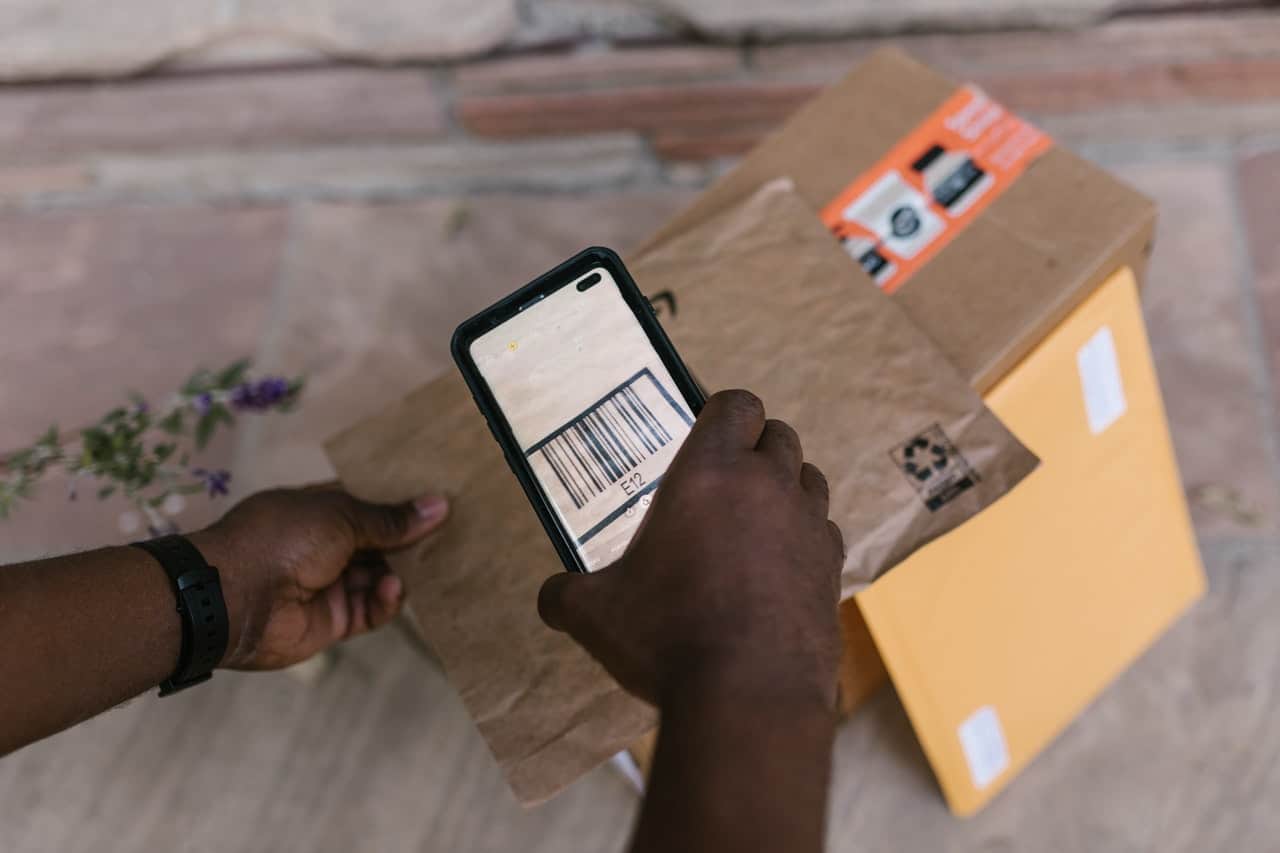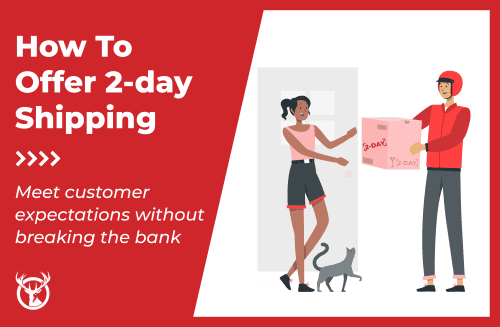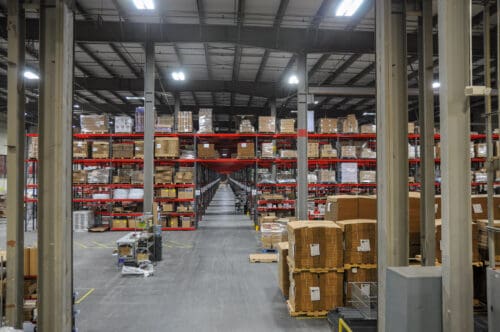Every eCommerce business needs to keep track of its inventory, but adding lot tracking to the mix can ensure you don’t let products expire or slip through the cracks. A lot tracking system allows companies like yours to understand the inventory they have on hand, then use it to best fill orders.
You have a powerful revenue and expense management tool when your fulfillment partner provides lot tracking support for your stock, tracing goods from when they’re produced to their arrival at the customer’s doorstep. If it’s a feature you have access to, turn it on for your business. If not, here’s why you’ll want to ask for it from 3PL companies.

TL;DR:
Lot tracking essentials

Lot tracking uses unique ID numbers to trace products from manufacturer to customer, enabling better inventory management.

Unlike SKUs and serial numbers, lot numbers track specific production batches to manage expiration dates and quality control.

3PLs use lot tracking to improve inventory management, enable smarter fulfillment, and reduce human error throughout your supply chain.

Proper lot tracking helps identify issues faster, prevent spoilage, facilitate recalls, and ensure regulatory compliance.
What is lot tracking?


A lot number is an ID number applied to parts or products generally during the manufacturing process. Lot numbers are either printed on the product’s packaging or stamped on the product itself. Then, lot tracking software uses these numbers to trace the steps a group of products take from the manufacturer to a store or from the manufacturer to the end consumer.
Lot or batch tracking enables partners in a supply chain to track the movement of products. They can perform quality control checks and ensure they’re checking goods from every batch. If there is a defect, you can recall products just within that batch, minimizing risk to consumers and business revenue.
A batch number is standard for food and other products with an expiration date. These numbers help protect consumers in the event of something like a salmonella outbreak while also helping sellers know when to remove items when they hit that expiration date.
Lots vs SKUs vs serial numbers
Most goods have at least one number associated with their production. Unfortunately, these aren’t always uniform, and the number provided may have different capabilities or purposes. Knowing the different types of numbers and their uses can help you better use lot tracking software and inventory management tools.
Let’s briefly look at two other common number options and how they differ from a lot number:
01
SKU: A stock-keeping unit (SKU) is a tracking number based on product characteristics. SKUs can differ based on price, color, and other options. Red Stag, for example, can create a new SKU for you when we kit a group of products together for a new offer. Two products can have the same SKUs even if they are created years apart or on different continents. On the other hand, a lot or batch number will cover a portion of these goods, such as those produced at a specific location on a specific date. This is why your inventory management will measure total levels using SKUs and monitor individual characteristics like shelf life based on the lot number.
02
Serial number: A serial number is a specific number with a clear distinction because it is unique to an individual product. A lot number will cover many products, each with its own serial number. One important note is that a serial number may include an SKU, lot number, or another identifier. Your car’s VIN is unique, for example, but the number or letter in the 10th position indicates the model year. The 11th position indicates the plant that made your car (awfully close to lot tracking numbers).

PRO TIP: Always check with manufacturing partners to ensure you’re correctly using the numbers they provide.
Regulations and requirements

NOTE: Lot tracking is standard on lists of best practices, but it may also help your business meet regulatory requirements. Many kinds of products must be tracked in various ways, such as perishables and foods under Food and Drug Administration (FDA) rules.
If you create food products, it’s worth reading about the Food Safety Modernization Act’s new proposed rules for food traceability.
Lot tracking is generally required for products with a short-term expiration date, a definite shelf life, or those that could be harmful to consumers. This “harm” can be either from the product directly causing the issue (like lithium-ion battery igniting) or when a product can’t perform to prevent harm (like issues with seatbelts or fire extinguishers). Medicines, vitamins, cleaners, chemicals, and electronics like your laptop or smartphone typically have lot tracking requirements.
Work with your warehouse and legal team or your 3PL to determine if you have traceability requirements imposed by state or federal governments. It’s always smart to collect production date information for your own use. However, having this data available in a specific format may be required for any potential product recall.
Tracking lot numbers in the formats or structure that regulations require not only improves traceability but allows you to respond to recalls, concerns from customers, and government data reporting requests much faster. Your tracking system should be a partner in this, especially when it comes to linking lot numbers with SKUs and serial numbers.
How do 3PLs use lot tracking?
01
Your eCommerce fulfillment company, such as 3PLs like Red Stag Fulfillment, want to monitor product lots for safety and shipping reasons. Their inventory management software should do the tracking for you, based on scanning goods as they’re received. It’ll collect a wide range of relevant information that businesses and partners need. You can use this to manage your company operations better while the 3PL focuses on reports and actions in three main areas.

Inventory management

NOTE: Lot tracking software requires the user to scan barcodes and lot numbers throughout storage and fulfillment processes. When a 3PL receives inventory, they scan it. Lot tracking software can then help them store and track goods by expiry date. The 3PL can then instantly look across their inventory tracking to understand how many of your goods they have on hand based on these lot numbers and expiry date data.
Ask your 3PL to run an analysis on these items or give you access to lot tracking data so that you can track current inventory. For example, a 3PL like Red Stag will then help you adjust how much inventory you’re storing based on both purchases and any loss related to expiration. You’ll get help understanding how best to order and move batches thanks to real-time information.
Smarter fulfillment
3PL companies will often use lot codes to ensure they ship the oldest goods in their inventory first. This’ll manage your inventory levels while limiting the number of goods that reach expiry dates while on the warehouse shelf. Fulfillment by lot best practices will provide the control you need at the order level. Reduce overhead and minimize losses while you trace your stock.

Key Takeaway: We can help you identify opportunities and optimize product distribution thanks to smarter lot fulfillment.
Reducing human error
Every fulfillment process involves a variety of labor, which introduces human error into your system and stock. Supporting traceability and lot-level data works to minimize human error throughout the supply chain. Lot tracking requires scanning that can help you confirm when goods are received and that orders are put together properly.
System options that include scanning can help a fulfillment team correctly count, store, pick, pack, and ship products and orders. When lots are tracked and dates recorded regularly, businesses can better optimize their stock and any relevant system using that data.
Why is lot tracking important for your ecommerce business?
02
Any partner in the supply chain can employ lot tracking, and it’s a must for eCommerce businesses.
With lot tracking software, you can address all the recall information mentioned above and track product issues that customers raise. Say you have 20 customers who complain about a color mismatch or only three legs for a table. Lot tracking will identify if these issues correspond to a specific batch of products you received and make it easier for you to go back to the manufacturer for assistance.
Lot tracking can also help you understand if the issue is happening in a warehouse with your 3PL or in transit with your chosen carrier. They’ll help you track the pain point or issue and can also determine if it’s a manufacturing defect or human error at some point.
You want to keep track of your inventory as best as possible. Traceability with lot, batch, and SKU data makes it easy to understand what you have from production through order fulfillment. This imports the reports you can generate and informs operations for large trends and nuances to a particular product.
7 reasons you should use lot tracking for inventory management

Identifies issues faster through smarter reporting and more robust tracking that can tie returns, replacements, and other issues to specific lots

Avoid spoilage, contamination, and loss by fulfilling with goods that will expire first, while also ensuring that they will arrive to your customers well before the expiry date

Adhere to relevant regulations and make internal audit processes easier to complete

Quickly address recall issues while having proper data to recall only those products in the impacted batches and lots

Minimize human error across lot tracking, fulfillment, and more

Optimize your planning for lead times based on dates, batches, and manufacturing locations

Have a robust data set for trend analysis across lots as well as other product dimensions

What support do you need?
Red Stag Fulfillment works with our customers to provide clear traceability and accurate inventory counts. You’ll get access to many different forms of product and stock tracking services. For example, we support standard FIFO (first in, first out) or FEFO (first expired, first out). Customization is also an option for lot tracking, burn order, and other items or processes. Tell us what you need to get the biggest benefits from your inventory.
Improve your inventory management with lot tracking
Let’s work together to build the support you need for lot tracking, fulfillment, and beyond.
Talk With Us















